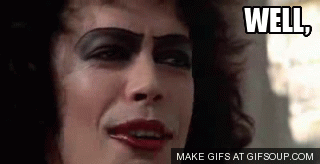- This post is part of a on-going series called “Being a Professional Manga Artist in the West“. The first post is here.
- You can buy my “Queenie Chan: Short Stories 2000-2010” collection as a USD$4.99 PDF (plus EPUB, DRM-free). Get it from Smashwords!
Part 3b: The TOKYOPOP Manga Pitching Process
I got a dialogue going with an editor at TOKYOPOP, who later became my first TOKYOPOP editor (I eventually had four). She was quite upfront about the nature of TOKYOPOP’s business – their books were aimed at teenage girls, a long neglected market in the American comics industry. Their business strategy was quite clear: get the girl readers into bookstores, where they can read and buy girl-oriented manga. So, it was obvious that action-adventure were not what they were looking for. They suggested I submit something more suitable to teenage girls.
I didn’t mind at the time. This was something that is common in publishing, and has always been common in all creative industries. Publishing is a business, and publishers publish because they want to make money. Sure enough, I submitted twice more, once for a romantic comedy called ‘TwinSide’ and another for a horror story called ‘Block 6,’ but I got rejected yet again.
This was unusual. At the time, I was friends with other manga-style comic artists who were also submitting to TOKYOPOP, and we all congregated on a message board called Pseudome. I knew through the grapevine that other people got green-lit the first or second time, but I didn’t (even though I was more experienced as a webcomic artist than most of them). Anyway, my editor eventually got exasperated by the rejections, and suggested I combine the horror story with the romantic comedy, submitting a ‘haunted school’ story.
Once again, I was ignorant at the time, but I now know that this is called submitting ‘on spec.’ It’s a common practice in the movie business (and also publishing), where the producer or publisher names a genre, and people looking to submit fills the mold that genre requires. The genre I was given was ‘haunted school,’ and I had 3 weeks to whip up something. The story I came up with was ‘The Dreaming,’ and when my then-editor pitched it with just a bunch of concept art I drew, the CEO said yes.
And that was how I landed my first publishing contract. It was rejection after rejection, followed by a bunch of doodles and a concept/genre.
I’m currently running the first 2 volumes of “The Dreaming” series on Smackjeeves. You can read it here.
Years later, after publishing my first book, I discovered that my story had become something of an urban legend at TOKYOPOP. I was helping someone from Pseudome write a submission, and she told me that her pitching editor at TOKYOPOP had told her an anecdote (she had been rejected once already, and her editor told her that story to encourage her). The story was: ‘There was a girl from Australia who got rejected four times before she got a green-light, so don’t despair and keep trying!’
When I heard the story, I was like, Gorsh, I wonder who that was!

Anyway, getting rejected all the time is not a bad thing. It’s actually the norm in the publishing industry, and it makes your skin so thick that pretty much everything that comes after getting published can be like water off a duck’s back. It also separates the wheat from the chaff – if rejection and bad reviews is enough to put you off working in the arts, perhaps the arts is not for you.
Next Monday, I talk about the beginning of the end for TOKYOPOP.

1 thought on “Section 1: My Story as a Professional Manga Artist (Part 3)”
Comments are closed.